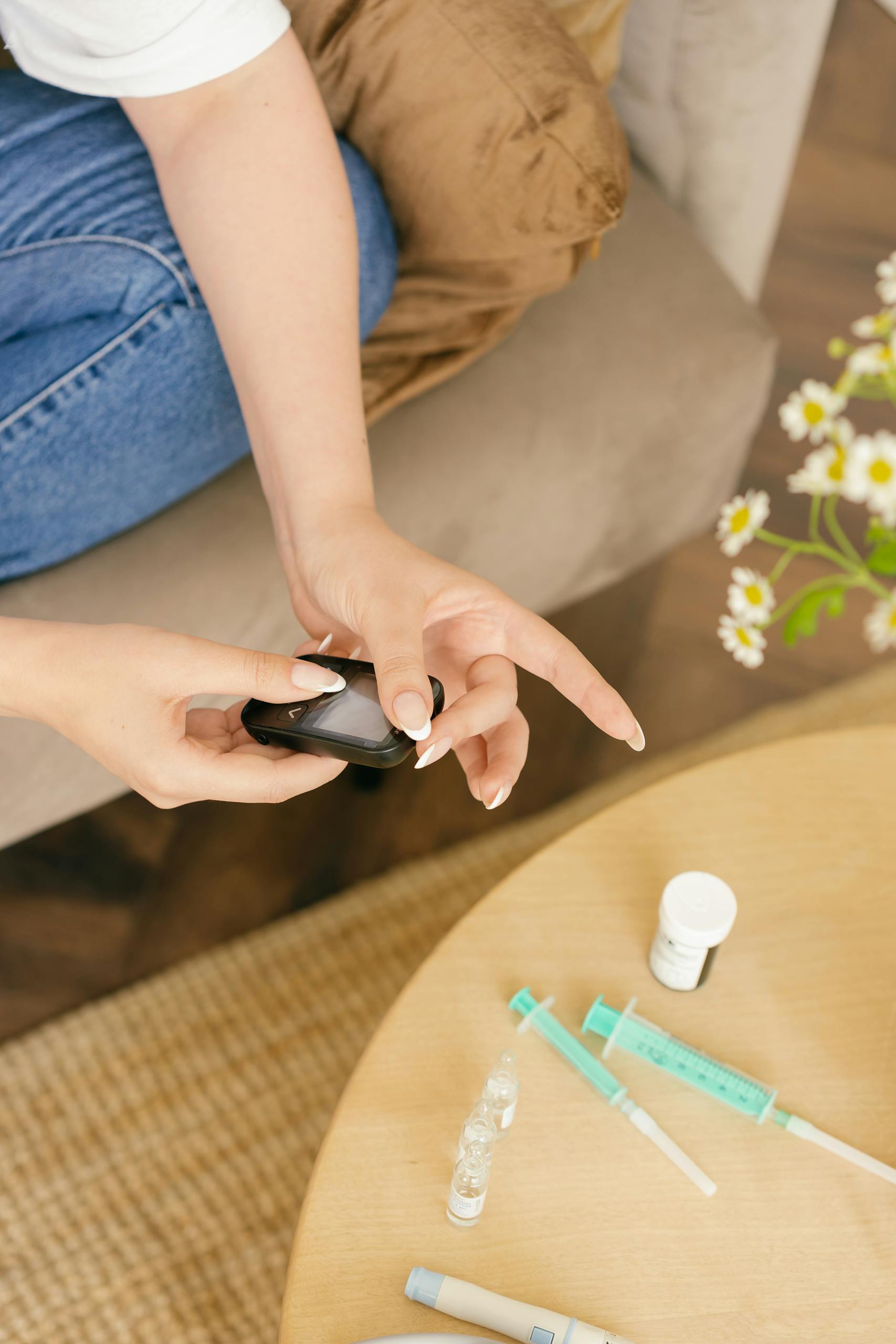
November marks National Diabetes Month, dedicated to raising awareness and encouraging actions to prevent the health issues linked to diabetes. Did you know that 52% of American adults are living with either prediabetes or type 2 diabetes? That’s more than half of us! But the good news is, there are so many ways to take control of our health. For women in midlife—especially those experiencing perimenopause or menopause—understanding the link between hormonal changes and blood sugar is empowering. Here’s what you need to know, along with some practical tips to help you keep blood sugar in check, optimize your health, and feel your best.
What is Type 2 Diabetes?
Type 2 diabetes is a chronic condition where the body either resists the effects of insulin—a hormone that helps blood sugar enter cells—or doesn’t produce enough insulin to maintain normal glucose levels. Over time, high blood sugar can lead to serious complications like heart disease, nerve damage, and kidney problems. Many people develop type 2 diabetes gradually, often after years of elevated blood sugar and insulin resistance, which makes early detection and intervention key.
Why Are Midlife Women at Higher Risk?
As women enter perimenopause, estrogen levels begin to fluctuate and ultimately decline. Estrogen is somewhat protective against insulin resistance, so as levels fall, insulin sensitivity can decrease, raising blood sugar levels. Combine this with the usual culprits—weight gain, increased belly fat, stress, and sleep issues—and it’s no wonder premenopausal women have a higher risk of prediabetes and undiagnosed type 2 diabetes than other adults. Menopause-related stressors like hot flashes, sleep disruptions, and added responsibilities at home or work can also contribute to higher cortisol levels, which in turn, elevate blood sugar levels.
What You Can Do to Lower Your Risk
Reducing risk and managing the onset of type 2 diabetes is about making consistent, manageable lifestyle changes that support blood sugar regulation:
Move More, Sit Less
Participate in at least 150 minutes of moderate-intensity activity (e.g., brisk walking, jogging or light running, cycling, swimming, rowing, hiking, dancing, etc.) each week. Do resistance training at least 2-3 days a week. Increase daily movement by taking the stairs, walking during calls, taking stretch breaks, using a walking pad, or wearing a lightly weighted vest while you’re moving around or doing chores. Movement helps lower blood sugar and improves insulin sensitivity.
Pair “Naked Carbohydrates” with Nutrient-Dense Foods
Naked carbohydrates are carbohydrate-dominant foods that are eaten alone, like grapes or other fruits. Pair these carb-rich foods with lean protein, healthy fats, and/or fiber to slow digestion, increase satiety, and slow the release of glucose into the bloodstream.
Sequence Meals by “Preloading” with Low-Glycemic Foods
Eat lean protein, non-starchy veggies, healthy fats, and/or fiber before the higher carbohydrate portion of a meal to decrease post-meal glucose spikes. For example, eat a salad loaded with greens and some protein before eating a starchy entrée or eat a handful of nuts, a hard-boiled egg, or some veggies 30-60 minutes before sitting down to a meal.
Choose Balanced Meals
Prioritize lean, high-quality protein (think eggs, chicken breast, turkey breast, lean beef, and fish), fiber-rich carbohydrates (think fruit, veggies, legumes, and whole grains), and healthy fats (think salmon, extra-virgin olive oil, avocado, nuts, and seeds). These foods help stabilize blood sugar and prevent spikes and crashes.
Follow a Regular Eating Schedule
Eating at consistent times each day can help keep your blood sugar steady. Try not to skip meals, and opt for balanced snacks, such as an apple with nut butter or plain Greek yogurt with berries, to avoid spikes and dips.
Set A Cut-Off Time
Aim to finish your last meal at least 2-3 hours before bedtime to support better blood sugar management and control. This allows your body ample time to digest and stabilize your glucose levels before you sleep.
Steer Clear of Sugary Beverages
Liquid sugar sources, like soda, juice, sports drinks, sweet tea, sweetened coffee drinks, and many alcoholic beverages, are rapidly absorbed, causing quick spikes in blood sugar levels, which can complicate diabetes management and increase the risk of health complications. Instead of consuming liquid sugar, opt for water, sparkling water, herbal tea, green tea, black coffee, infused water, and low-sugar mocktails.
Practice Mindful Eating with Gratitude
Engage in mindful eating by savoring each bite and appreciating the flavors and textures of your food. This approach can help you make more intentional choices, recognize hunger cues, and foster a positive relationship with food, all of which are essential for managing and preventing diabetes.
Incorporate Food Adjuncts like Apple Cider Vinegar and Cinnamon
Although more studies are needed, there is some evidence that adding apple cider vinegar and cinnamon to your meals may help lower glucose responses by improving insulin sensitivity and slowing carbohydrate digestion.
Walk After Meals
Even a short, 15-minute walk after meals can help reduce post-meal blood sugar spikes. It’s a small habit that adds up over time!
Prioritize Quality Sleep
Poor sleep can increase insulin resistance, so aim for 7-9 hours of quality rest every night. Try setting a consistent bedtime, limiting screen time before bed and being mindful of the content you consume (i.e., opting for calming and relaxing material instead of stimulating or stressful content), and practicing relaxation techniques like deep breathing.
Manage Stress
Chronic stress raises cortisol levels, which can drive up blood sugar. Practice daily stress-management techniques, whether that’s taking a yoga class, doing a meditation, keeping a gratitude journal, or simply taking time to do things you enjoy.
Monitor Your Blood Sugar
Use a continuous glucose monitor (CGM) if you can; it provides real-time data so you can see how different foods, activities, and stress affect your glucose levels.
Track Key Biomarkers
Stay on top of hemoglobin A1C, fasting glucose, fasting insulin, blood pressure, triglycerides, high-density lipoprotein (HDL) cholesterol level, and waist circumference. These markers give you a clear picture of your metabolic health and can guide changes in your lifestyle or medication if needed.
Building Health-Protective Habits for the Long Term
Ultimately, managing blood sugar comes down to consistency. Making small, sustainable changes—like a regular exercise routine, balanced meals, and managing stress—is key to staying healthy in midlife and beyond. Understanding how your body responds to different foods and activities with a CGM can be a helpful, empowering tool for women with or at risk for type 2 diabetes. This technology gives you real-time feedback to fine-tune what works best for you, so you can better manage your health.
Let’s use National Diabetes Month as a reminder to prioritize our health, listen to our bodies, and take proactive steps that protect us well into the future!
My Favorite Tools
- Cronometer: Develop healthy habits with this all-in-one nutrition, exercise, and health tracker app.
- PACEARTH Weighted Vest: Transform your routine with a weighted vest and unleash your inner powerhouse! Wearing a weighted vest during workouts or daily activities can enhance strength training by increasing resistance, which helps improve bone density, muscle mass, and metabolism—crucial factors for women in midlife. This added weight also boosts calorie burn and can make everyday movements more challenging and effective, contributing to overall fitness and stability.
- Insight Timer: The best meditation app with the world’s largest free library of more than 200k guided meditations, 17k teachers, and the world’s most loved meditation timer.
- The Five-Minute Journal: Even on the busiest days, spend only five minutes practicing gratitude to boost positivity, reduce anxiety, and improve well-being. It’s the simplest, science-backed way to a happier you.
- Lemon Balm Tea: This herb, part of the mint family, has gentle calming effects that help ease stress and promote relaxation, making it a natural ally for better sleep. Enjoy it on its own or blend it with chamomile for an even stronger sleep-boosting tea.
- FreeStyle Libre 3: The FreeStyle Libre 3 is a continuous glucose monitoring (CGM) system that includes a sensor and an app. The sensor is applied painlessly to the back of your upper arm and streams glucose readings automatically to your smartphone so you can know your glucose anytime with a quick glance.
Ready to Reclaim Your Health Through Personalized Nutrition?
You don’t have to navigate perimenopause and menopause alone. By working with Daria, you’ll gain the tools and confidence to cut through the confusion, manage your symptoms, optimize your health, and build sustainable habits for a longer, healthier life. Explore services or book your free discovery call now:

